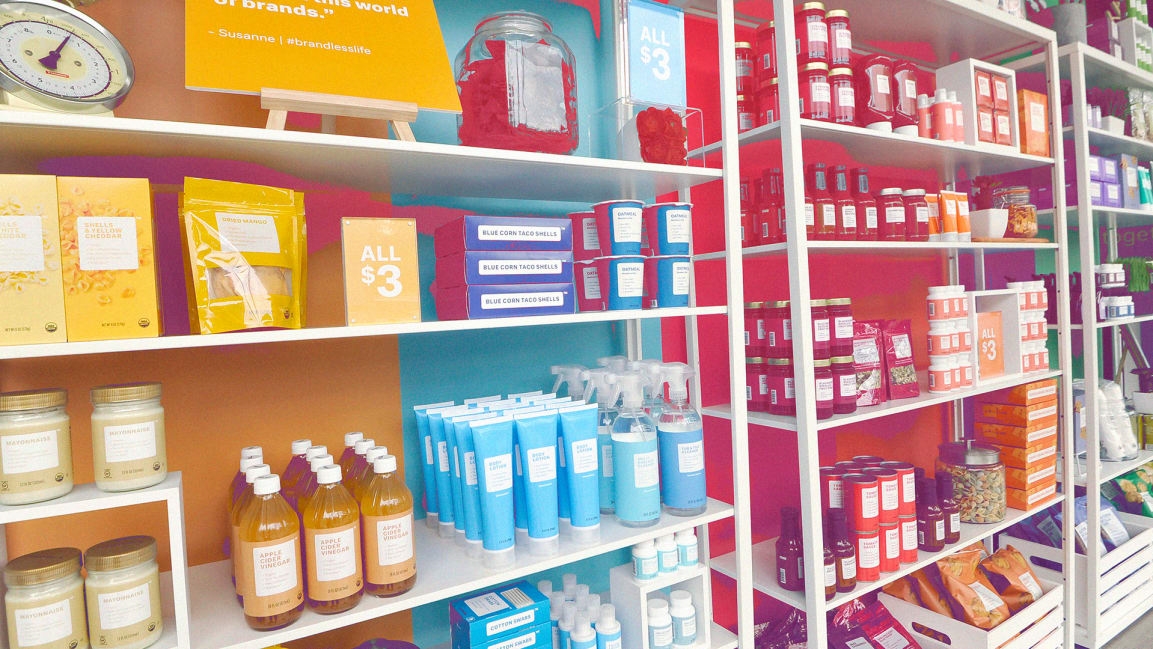Brandless, the pioneering Amazon alternative, shuts down
Today, just two and a half years after it launched, the online store Brandless is shutting down. The company, which sold simply branded household, personal care, baby, and pet products on the cheap, is no longer taking orders and has laid off 70 people. The last 10 employees still working at the company will process the remaining few customer orders and “evaluate any acquisition offers,” according to the tech news site Protocol, which first reported the news.
On the Brandless website, the company attributes its downfall to the crowded e-commerce market. “While the Brandless team set a new bar for the types of products consumers deserve and at prices they expect, the fiercely competitive direct-to-consumer market has proven unsustainable for our current business model,” it reads.
The death of Brandless was set in motion after SoftBank’s $100 billion Vision Fund, a Japanese conglomerate, poured $240 million into the company in July of 2018, a year after the brand launched. The Vision Fund has also backed other high-profile startups, including WeWork and Uber. After the $240 million infusion, the company underwent major leadership changes. In March 2019, Brandless cofounder and CEO Tina Sharkey resigned from her role, which was taken up by the brand’s CFO, Evan Price, and later by John Rittenhouse, the former COO. This turbulence may have been partly due to the fact that SoftBank was pushing Brandless to quickly turn a profit and meet steep financial targets, according to a report from The Information.
According to Protocol, the sudden closure of Brandless happened because the company’s board wanted to shutter the company while there was still enough money to provide severance packages to employees.
It’s a dramatic end for a company that entered the market with an original idea, designed to disrupt the traditional grocery industry. Sharkey and her cofounder, Ido Leffler, launched the company with a vision of bringing the direct-to-consumer business model to the consumer packaged goods industry. They created the infrastructure to develop high-quality organic products but make them cheaper than what you might find at Whole Foods. They were able to do this by controlling their entire supply chain from manufacturing to the actual selling of the product, cutting out the middlemen along the way. Originally, the company had a very limited assortment of products and sold every item for $3 to simplify the overwhelming number of decisions people make when walking through the supermarket or shopping online. Later, Brandless expanded into more expensive products but typically sold them for a multiple of $3.
Brandless also introduced a fresh approach to branding. Sharkey made the case that many grocery products contain a “BrandTax,” which can be up to 40% of what the item actually costs, to pay for the premium status and branding of that item. Brandless, on the other hand, rejected the over-designed products that fill grocery aisles. The company hired Red Antler to create simple packaging. Each product featured a white box on the label with a checklist of two to five descriptors such as “organic” or “no added sugar,” which were important qualities to consumers, based on focus groups.
But Brandless, as a business, had a host of challenges that it was ultimately not able to overcome. One was that Brandless clearly required a longer time horizon to become profitable than Softbank was hoping. Over the last two years, Brandless was building its name recognition and customer base by throwing live events, such as a speaker series, and opening pop-ups. But none of this would lead to quick profitability.
Second, other brands entered the market with similar premises. Public Goods, for instance, launched around the same time as Brandless, with a similar offering of household, personal care, and grocery products in minimal packaging that promised, “Just one version of every essential in just one place.” Public Goods has grown much more slowly than Brandless. It took $3 million in seed funding in 2018, which pales in comparison to Brandless’s $240 million. But this also means that Public Goods is under less pressure to quickly turn a profit and grow so quickly, and this may save it from Brandless’s fate.
A Brandless spokesperson declined to comment for this story.
(34)



